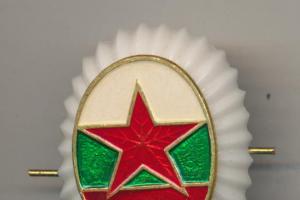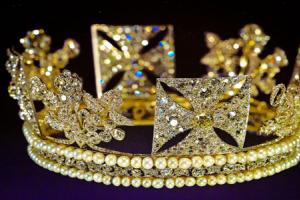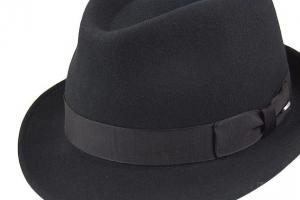Greetings everyone! Anyone who loves working with resin and who loves the “kitchen” of creating something with their own hands!
So, I started by choosing from my supplies the flowers that I wanted to fill, and outlined the desired contours of the decoration on paper (the plants must be completely dry). You can skip this step and fill it without a stencil, but I wanted the plants to fit =))
I chose flowers of heather, forget-me-nots and speedwell.




Now you need to prepare the resin: mix (according to the instructions!) and leave for about 2-3 hours (to gain viscosity). Immediately after mixing, there are a lot of bubbles in the resin; they will go away on their own after a while and you can use it. At this stage it is good to pour it into molds. But I'm waiting for it to thicken.

While the resin is infusing, I make the number of stencils I need and cut out:

Important point- it is necessary to prepare the surface on which the products will harden. It should be as smooth as possible; If you don’t remove the dust before pouring, it will end up on future brooches and earrings. In my case, the surface is glass, and using building level You can lay it as flat as possible by placing something under it.

The next step is to place a file or several files on a flat surface and UNDER Place stencils on them.

Pour the finished, slightly thickened resin directly onto the file and spread it with a toothpick so that the height is approximately 2-3 mm. Necessarily you need to cover it with a dome-lid! Through experience, I found out that under a low dome the likelihood of dust sticking is less than if you cover it with one common and high one. After 15 - 30 minutes, the resin may crawl away from the contour, then you also need to use a toothpick to return it to its place or drip more resin and distribute it.


Now we forget about the resin for about a day. It is necessary that the newly made bases harden completely and then you can separate them from the file (you can separate them earlier, but uncured resin will bend and leave fingerprints) The edges, of course, will not be perfectly smooth, so sandpaper or you need to file them with a file. If there are paired elements, such as earrings, then you need to make them as symmetrical as possible.
The files themselves are convenient to use for any work with resin! This will protect your table from resin sticking to it.


We mix a new portion of resin, leave it to infuse and in the meantime try on the arrangement of dried flowers and if everything suits you, you can continue!


After the bubbles have come out of the resin (30-60 minutes have passed), drop a couple of drops onto the base, distribute them and place the flowers. This is necessary in order to fix them in the right place. Cover with a lid and leave to dry.

Well, another day has passed)) (or half a day). Again we prepare a new resin, leave it to thicken, but not too much! Otherwise, when pouring too thick resin, the resulting bubbles on the plants will be difficult to remove and you can break a twig or leaf when pushing out the bubbles with a toothpick! It is better to use its medium consistency, which is similar to fresh honey). This filling is needed primarily so that the resin flows into all the irregularities of the plant. Let me remind you about the flat work surface, because if at this stage it is not smooth, then the resin will simply drain and ruin the mood and work. The higher the lens needs to be formed, the smoother the surface should be!

Then follow the well-known scheme: cover with a lid and leave to dry). A day later, you need to dilute the new resin and wait for it to have a thick consistency (thick honey) and pour it again to form a voluminous coating. Remove again FULL drying under an anti-dust cover on a flat surface (complete drying varies among different resin manufacturers, but it is better to play it safe and not touch the products for several days; unless the plans included leaving fingerprints, of course)
After complete drying, turn the finished product over. front side and do another fill with thick resin, because There are no plants on it, you can do just one fill so as not to leave a flat back surface and remove the texture of the file! This way the plant ends up inside the mold. At the same time, the form becomes very strong and you won’t be able to break it, just saw it))) All this work seems easy, but to do everything carefully you need to have a certain amount of patience and skills!
Decorations made using resin require careful handling and do not like open sun (plants can burn out if left for a long time, for example on a windowsill)
When all the fillings are completed and dry, you can make the intended decoration (for example, make a hole with the thinnest drill), or use it as you please. I love simple shapes and a minimum of decor, so I ended up with the following decorations and photographs in the new winter:
Pendant with a sprig of heather 20 x 80 mm


Earrings with forget-me-nots on silver earrings 28 x 70 mm

Pendant with a twig of speedwell 30 x 62 mm

Earrings on silver earrings with a sprig of speedwell 23 x 64 mm


Thank you for your attention! I wish everyone inspiration and implementation of their ideas!
To work you need:
- epoxy resin;
- silicone molds (for epoxy resin);
— disposable gloves, syringes, cups, stirring stick;
- various natural materials(dried flowers, shells, pebbles, etc.);
- gold leaf, stained glass paints, Perlex powder.
I work on a regular file so as not to stain the table.
To create the hemisphere pendant, I selected two different dandelions so that I could compare how they would look in the final version.
Before starting work, thoroughly rinse all molds that we plan to use and wipe them dry. Wearing gloves, pour resin and hardener into disposable cups (it’s more convenient to fill them with a syringe). We work in a well-ventilated area.

Having measured required amount resin, pour it into a clean, dry glass, use another syringe to measure the required amount of hardener and add it to the resin. Different manufacturers have their own proportions, so carefully read what is written on the packaging and follow all recommendations for work. The final result depends on the accuracy; if the resin has not hardened, it means the proportions have been violated, or the mixture is not mixed well enough.
If you take a syringe with a rubber insert inside, the hardener will not splash when you pour it into the epoxy. Using a wooden stick (you can use skewers for kebabs) thoroughly mix the resulting mixture. I time it for 10 minutes and stir it in a circular motion to prevent air from getting in.

We carefully place the dandelion in the mold (I removed the lower parachutes with tweezers)

After mixing, I leave the resin for about half an hour so that chemical reaction passed: you can judge that the reaction is taking place by the heated glass of resin. I found experimentally that you should not work in very hot weather, the reaction will begin to proceed very violently and the resin will harden completely within half an hour. This applies to the resin I use; different manufacturers have different criteria.
Gently pour the resin into the mold in a thin stream, onto the dandelion.

Because After it hardens, it will settle a little, pour it so that you get a small convex lens.

Now I will show you how you can make beautiful rings from pieces of glass washed and polished by the sea.

Pour a little resin, place the pebbles, carefully add on top, as when working with a hemisphere, to create a convex surface.


I'm making earrings with dandelion parachutes. Pour some resin and spread it with a stick. At this stage, the resin begins to gradually thicken, this is exactly what is needed so that the parachutes remain in the position in which they were placed.

We arrange the bouquet.

Top it up with resin with a small bulge. If you do this carefully, you will end up needing minimal sanding.

A truncated ball is obtained in exactly the same way. Pour resin halfway into the mold.

We place the required number of parachutes with a toothpick or, as I did, with a large needle (it’s good to wipe it off the resin).

Add resin to the mold with dandelion.

Now we’ll make a bracelet with shells from the Black and Azov Seas. In the same way, pour epoxy resin into a clean, dry bracelet mold. By this time it has become even thicker, so some of it remains on the walls, which is what I need. Add shells, pebbles, starfish, anything interesting to the mold) Pour out the crushed shells, which stick to the walls, creating the effect of a suspended state.

Half an hour before this, I prepared a new portion of resin, very carefully pour it on top to avoid the appearance of unnecessary bubbles. If there are still bubbles, you can preheat the oven to 80 degrees, ventilate, place a mold with resin there (molds can withstand temperatures up to + 204 C). The bubbles will come out.

It is important that the mold stands on flat surface, otherwise the resin will harden in an inclined position. The more carefully you pour the epoxy, the less sanding you will need to do later. I poured resin as much as possible to the very top, with a slight bulge.

Now we wait a day until the resin dries completely. To prevent debris/dust from getting on the surface of the products, you need to cover them with something, a box, a lid.
At this time we will make a pendant. We prepare the main background - apply liquid plastic to the workpiece. Cover with polymer clay, rolled into a thin layer, distribute and bake in the oven. Let it cool and you can start working.

We pour a few drops of resin so that it can be distributed on the surface and, using tweezers and a needle, we make a composition from completely dried leaves - flowers. The resin acts as a glue that prevents the light dried flowers from moving from their place. You should not use live or poorly dried flowers for filling with resin; over time they will deteriorate and turn black.

Because There is a holder on the back of the pendant, I had to put it in a mold so that the surface was horizontal. I never think in advance what the composition should be, so I lay out all the suitable flowers and herbs and with inspiration begin to assemble a small living picture.

The end result is such a small world. We leave it to dry, after the resin has hardened, you can fill it with a second layer, forming a convex beautiful lens.

A day passed, the resin was completely cured and I took out all the resulting blanks. This is a bracelet, its upper part.

Using the same principle, you can make a pendant, earrings, ring, etc.

This is a hemisphere with a dandelion, next to it is a second one, orange, for comparison.


These are the resulting truncated balls with parachutes:

I also filled in small hemispheres:


Rings made from sea glass; for comparison, I used the ones I made earlier.

If you add a drop of stained glass paint or Perlex powder to the resin, you can get different shades resin. When painting with stained glass paint, you should add just a drop, because... The proportions between the resin and hardener may be disrupted by coloring, and as a result the product may not harden or may become sticky when touched.

You can add gold leaf and get interesting decorations.

And these lenses with parachutes, as you can see, lie beautifully. Just as it was intended.

The reverse side remained flush with the edges of the lenses.

After complete hardening, it is necessary to sand down uneven and sharp edges.

Jewelry created using epoxy resin and mold is amazingly original appearance. This master class will present step-by-step instruction, supplemented with photographs and detailed description each stage. By repeating all the steps of the wizard, you can create your own unique decoration, attracting the attention of others.
So, for work we will need:

- epoxy resin;
- silicone molds that are combined with epoxy resin;
- disposable gloves, plastic cups, syringes, sticks for mixing ingredients;
- decorative elements: shells, colored pebbles, dried flowers;
- powder, stained glass paints and gold leaf;
In order not to stain the table surface, it is better to do the work on a regular file. A hemispherical pendant will look beautiful if you add dandelions to it. For work, we will need two dandelions, so that later we can compare how they look in the finished version.

Before work, carefully rinse all molds prepared in advance and wipe them dry with a cloth. Wear disposable gloves to protect your skin from unwanted damage. After this, pour resin and hardener into plastic cups. In the future, it will be convenient to draw them into a syringe. Carry out all jewelry making steps in a well-ventilated room.

Measure out the required amount of epoxy resin and pour it into a clean a plastic cup. Using a syringe, draw up the hardener and add it to the resin cup. Different manufacturers indicate different proportions required to obtain the result. Therefore, please read the instructions on the package first. It is important to carefully follow all manufacturers' recommendations for work. The quality and beauty of the finished craft directly depends on the accuracy of the calculations. If you mixed epoxy resin and hardener, but the mixture does not harden, then the proportions are off. This can also happen due to insufficient thorough mixing of the ingredients.
If the syringe has a rubber insert, the hardener will not splash. The resulting mixture is mixed with pre-prepared wooden chopsticks. You can use kebabs skewers. The solution should be stirred for ten minutes in a circular motion.

The dandelion fits very neatly into the mold. Parachutes that interfere with work can be removed using tweezers.

After mixing the ingredients, leave the resin for half an hour. This time is enough for all chemical processes to take place. You can see that a chemical reaction is taking place by the state of the glass. It will heat up. It is not recommended to work with epoxy resin in hot weather, as the reaction proceeds quite violently and the resin completely hardens within half an hour. Although, different manufacturers offer epoxy resins of different quality.
Carefully, in a thin stream, pour epoxy resin over the dandelion placed in the mold.

After hardening, the resin will settle a little. Therefore, it should be poured into the mold with a small margin (convexity).

Now let's try to make beautiful rings from glass washed by the sea.

So, take some resin, lay out the pebbles and fill them with the mixture in the same way as when working with a hemisphere. A small bulge should form.


You can make earrings with dandelion parachutes. Pour a small amount of resin and spread it carefully using a stick. This step will thicken the resin slightly. This will help the parachutes stay in the position in which they were stowed.

Make a bouquet.

Pour some resin on top to create a bulge. If you work very carefully, then minimal sanding of the product will be required in the future.

A truncated ball is created in a similar way. Fill half of the mold with resin.

Using a toothpick or needle, place the required number of parachutes.

Pour epoxy resin into the mold.

Now let's try to make a beautiful bracelet decorated with shells. Pour resin into a special bracelet mold. At this point the epoxy became even thicker. This is what we need. Add pebbles and shells to the mold. The crushed shells will stick to the walls, giving the impression of being suspended.

About half an hour ago a new batch of resin was prepared. It should be poured into the mold from above. This must be done with extreme care to avoid the formation of bubbles. What to do if bubbles appear? Preheat the oven to 80 degrees and place the mold with resin there. Leave in the oven until the temperature increases to 204 degrees. After this, the bubbles will come out.

Make sure that the mold is in a level position during operation. Otherwise, the resin will harden at an angle. Remember that the more carefully you work with epoxy resin, the less sanding you will have to do on the finished product.

Now leave the mold for a day until it dries completely. To prevent debris from getting onto the surface of the future product, cover the mold with a box or lid.
While the bracelet is drying, you can make a pendant. Let's start by creating the main background. To do this, apply to the workpiece liquid plastic. Cover it up polymer clay, rolled out into a thin layer. The resulting composition is baked in the oven. After cooling, you can start working.

Pour a couple of drops of resin onto the surface. Using tweezers, a composition is made from dried leaves or flowers. In this case, the resin is the glue. She will not allow the composition to budge. Fresh flowers should not be used to create the composition. Over time, they will turn black and lose their appearance.

There is a holder on the back surface of the pendant. It should also be placed in a mold to create a flat surface. It is not necessary to think through the composition in advance. You can create masterpieces by improvising.

The result is a unique picture. The craft needs to be dried. When it dries, a second layer of resin is poured, forming a bulge.

After a day, the bracelet hardened and can be taken out of the mold. This is the top part of the product.

Rings, earrings and pendants are created in a similar way.

Beautiful hemisphere decorated with dandelion.


Unusual truncated transparent balls with parachutes.

You can also make small decorative hemispheres.


Previously made rings decorated with sea glass.

To give epoxy resin bright shade, you can add a little powder or stained glass paints. If you decide to use stained glass paints, add very little to the resin. Otherwise, the proportions between the resin and hardener may be disrupted. Ready product will not harden, but will become sticky.

If you add gold leaf, you get very unusual jewelry.

And these are beautiful lenses decorated with dandelion parachutes.

The reverse side after drying remained flush with the edges.

This back side pendant, which was obtained after the resin hardened.

It should be sanded carefully. To avoid breathing dust, you can use a respirator.

After grinding, this is the back part of the hemisphere.

All sharp and uneven edges must be carefully sanded after the resin has cured.

We do the same with the bracelet. You can use a special manicure machine.

If you work carefully, then minimal sanding will be required in the future.

Sanded edges can be varnished. The varnish layer should be very thin.

After it dries, you can enjoy the result of the work done.

A very beautiful frame was chosen for the pendant, which is decorated with a miniature steel butterfly.









